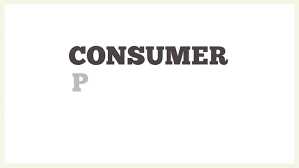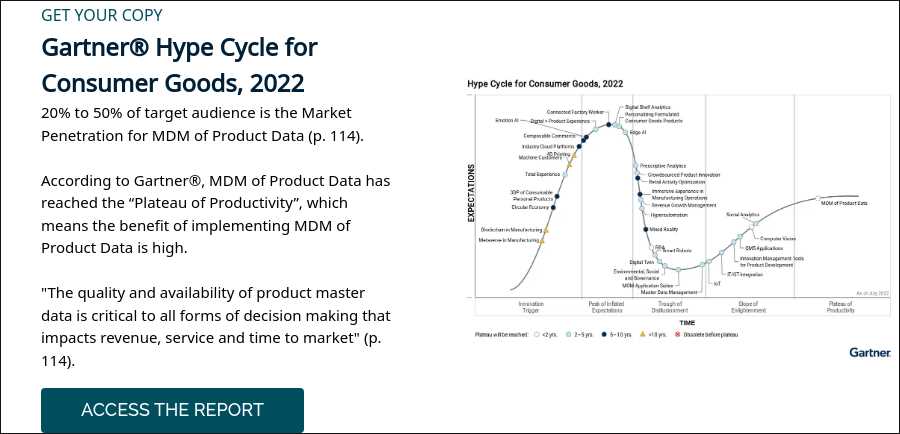Overview of Consumer Packaged Goods (CPG)

Consumer Packaged Goods (CPG) refer to products that are consumed on a daily basis by individuals. These products are typically used up relatively quickly and need to be replenished frequently. CPG can include a wide range of items such as food and beverages, personal care products, household cleaning products, and more.
CPG products are typically mass-produced and sold in large quantities. They are often packaged in standardized formats and are available in various retail outlets such as supermarkets, convenience stores, and online platforms. These products are designed to meet the everyday needs of consumers and are an essential part of their daily lives.
One of the key characteristics of CPG is that they have a relatively short lifespan. They are consumed or used up within a short period of time, usually within days, weeks, or months. This is in contrast to durable goods, which have a longer lifespan and are typically used for a longer period of time.
CPG products also have a high purchase frequency. Consumers need to buy these products regularly to meet their ongoing needs. For example, people buy groceries on a weekly or monthly basis, and they purchase personal care products such as shampoo and toothpaste on a regular basis as well.
Overview of Durable Goods
Durable goods are products that are designed to last for an extended period of time, typically more than three years. These goods are often more expensive than consumer packaged goods (CPG) and are intended to be used over a longer period of time.
Durable goods can be categorized into various industries, including electronics, appliances, furniture, automobiles, and machinery. These products are typically larger in size and require more investment from consumers.
One key characteristic of durable goods is that they are not consumed or used up immediately after purchase. Instead, they are used repeatedly over time, providing long-term value to the consumer. Examples of durable goods include televisions, refrigerators, cars, and washing machines.
Unlike CPG, durable goods are not typically purchased on a regular basis. Consumers often spend more time researching and evaluating their options before making a purchase. The decision to buy a durable good is often based on factors such as quality, durability, and functionality.
Another important aspect of durable goods is their lifespan. These products are designed to withstand regular use and are expected to last for a significant period of time. Manufacturers often provide warranties or guarantees to assure consumers of the quality and longevity of their products.
Overall, durable goods play a crucial role in the economy and in consumers’ lives. They provide long-term value, contribute to economic growth, and meet the needs of individuals and businesses alike.
Key Differences between CPG and Durable Goods
1. Product Lifespan
One of the main differences between CPG and Durable Goods is their product lifespan. CPG refers to goods that are consumed or used up relatively quickly, usually within a short period of time. Examples of CPG include food, beverages, toiletries, and cleaning products. These products have a short lifespan and are typically purchased frequently.
Durable Goods, on the other hand, are products that are designed to last for an extended period of time. They are not consumed or used up quickly. Examples of Durable Goods include appliances, electronics, furniture, and vehicles. These products have a longer lifespan and are not purchased as frequently as CPG.
2. Purchase Frequency
Another key difference between CPG and Durable Goods is the purchase frequency. CPG products are typically purchased more frequently by consumers due to their short lifespan. Consumers need to replenish these products regularly, leading to more frequent purchases. This creates a higher demand and turnover for CPG products.
Durable Goods, on the other hand, are not purchased as frequently. Consumers typically make these purchases less often due to the longer lifespan of these products. Durable Goods are considered more of an investment and consumers tend to research and consider their options before making a purchase decision.
3. Consumer Behavior

On the other hand, consumers tend to be more cautious and deliberate when purchasing Durable Goods. They may spend more time researching and comparing different options before making a purchase. Factors such as quality, durability, and functionality play a significant role in the decision-making process. Marketing strategies for Durable Goods often focus on providing detailed product information, showcasing features and benefits, and building trust with the consumer.
Product Lifespan
In the world of consumer goods, the product lifespan refers to the length of time a product remains usable and relevant to consumers. It is an important factor to consider when comparing consumer packaged goods (CPG) and durable goods.
Consumer Packaged Goods (CPG)
For example, a bottle of shampoo may last for a few weeks or months, depending on the frequency of use. Once the shampoo is used up, consumers need to purchase a new bottle to continue using it.
Durable Goods
Durable goods, on the other hand, are products that are designed to last for an extended period of time. These include items such as appliances, electronics, furniture, and vehicles. The product lifespan of durable goods is typically much longer compared to CPG.
For instance, a refrigerator can last for several years before it needs to be replaced. Similarly, a car can be used for many years before it becomes outdated or no longer functional.
The key difference in terms of product lifespan between CPG and durable goods lies in their longevity. CPG have a shorter product lifespan and need to be replaced more frequently, while durable goods have a longer product lifespan and require replacement less often.
This difference in product lifespan also affects consumer behavior. Consumers tend to make more frequent purchases of CPG due to their shorter lifespan, whereas purchases of durable goods are typically less frequent but involve higher costs.
Purchase Frequency

The difference in purchase frequency between CPG and Durable Goods is influenced by several factors. Firstly, the nature of the products themselves plays a role. CPG products are perishable or have a limited lifespan, which necessitates regular replenishment. On the other hand, Durable Goods are designed to last for a longer period of time, reducing the need for frequent purchases.
Secondly, consumer behavior also plays a role in determining purchase frequency. Consumers tend to prioritize the purchase of CPG products due to their immediate need and essential nature. In contrast, the purchase of Durable Goods is often considered more discretionary and can be postponed until the consumer feels the need to replace or upgrade their existing product.
Consumer Behavior
Factors Influencing Consumer Behavior
There are several factors that influence consumer behavior:
| Factor | Description |
|---|---|
| Cultural Factors | These include values, beliefs, customs, and traditions that are shared by a particular society or group. Cultural factors can greatly impact consumer preferences and purchasing decisions. |
| Social Factors | Social factors refer to the influence of family, friends, peers, and other social groups on consumer behavior. People often seek approval and acceptance from their social circle, which can affect their purchasing choices. |
| Psychological Factors | Psychological factors include individual motivations, perceptions, attitudes, and beliefs. These factors can greatly influence consumer behavior and decision-making processes. |
| Personal Factors |
The Consumer Decision-Making Process

The consumer decision-making process consists of several stages:
- Need Recognition: The consumer recognizes a need or desire for a particular product or service.
- Information Search: The consumer gathers information about different options and evaluates potential choices.
- Evaluation of Alternatives: The consumer compares different products or brands based on various criteria such as price, quality, and features.
- Purchase Decision: The consumer makes a decision and completes the purchase.
- Post-Purchase Evaluation: The consumer evaluates their satisfaction with the purchased product or service.
Marketing Strategies for Consumer Behavior
Businesses can use various marketing strategies to influence consumer behavior:
- Targeted Advertising: By identifying and targeting specific consumer segments, businesses can create tailored advertisements that resonate with their target audience.
- Personalized Marketing: Personalized marketing involves delivering customized messages and offers to individual consumers based on their preferences and behaviors.
- Influencer Marketing: Collaborating with influencers who have a strong influence on their followers can help businesses reach and engage their target audience.
- Social Media Marketing: Leveraging social media platforms allows businesses to interact with consumers, build brand awareness, and gather valuable insights about consumer preferences.
- Customer Reviews and Testimonials: Positive reviews and testimonials from satisfied customers can greatly influence consumer behavior and encourage others to make a purchase.

Emily Bibb simplifies finance through bestselling books and articles, bridging complex concepts for everyday understanding. Engaging audiences via social media, she shares insights for financial success. Active in seminars and philanthropy, Bibb aims to create a more financially informed society, driven by her passion for empowering others.
